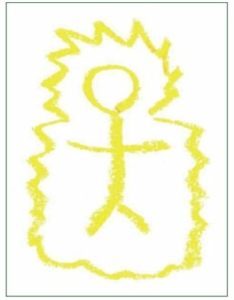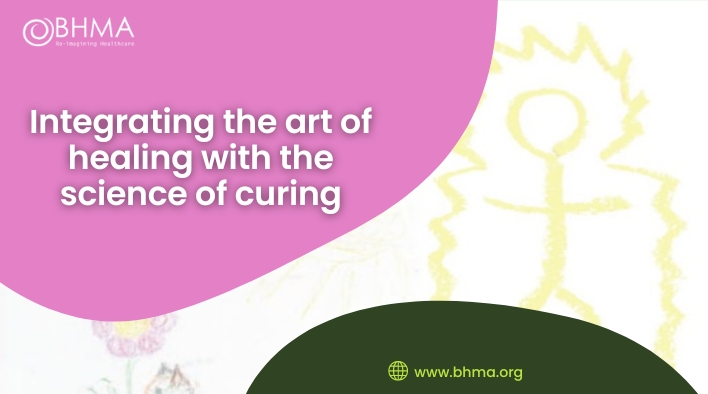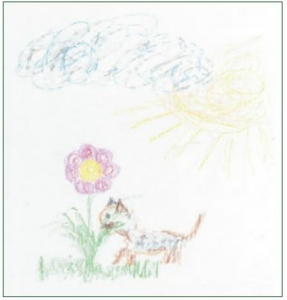Integrating the art of healing with the science of curing
Paul Dieppe, University of Exeter Medical School with Sara LWarber, University of Exeter Medical School; University of Michigan Medical School, Emmylou Rahtz, University of Exeter Medical School
Published in JHH15.1 – Transformation innovation in healthcare
I am a doctor who has had two different medical careers – the first in academic rheumatology, where my special interest was in osteoarthritis; the second in health services research, where I became particularly interested in placebo and nocebo responses. I have always ‘known’ that there was more to good medicine than the application of materialistic science alone, and have believed that human caring is a crucial part of helping others when they are sick. I am currently emeritus professor of health and wellbeing at the University of Exeter Medical School, where I am able to pursue my longstanding passion, by doing research on healing, in collaboration with a multidisciplinary team of colleagues based in several different countries.
Paul Dieppe
[bctt tweet=”The individual has the ability to self-heal, and such self-healing can be activated in different ways” username=”BritishHolistic”] Introduction
The theme of this issue of the Journal is Transforming innovations for health. In our view, an important transformation that needs to take place is the (re)introduction of a culture of healing illness, alongside the pursuit of curing disease.
Healthcare in the West has become totally dominated by biomedicine, with its rigid, reductionist, materialistic approach to the prevention or cure of disease. This paradigm has, of course, been startlingly successful in many ways: eradicating some infectious diseases, controlling others, developing effective therapies for many disorders, and transforming people’s lives through fantastic surgical achievements such as hip replacement or cataract removal. But there remains much illness, suffering (and disease) left over; indeed medicine’s effective interventions often save lives, but leave people damaged, distressed and in desperate need of caring and healing. Modern biomedicine pays relatively little attention to illness, will have nothing to do with healing, and has no answers for the suffering that comes from societal problems such as loneliness, loss of identity, loss of meaning in life, and alienation. As Rachel Naomi Remen (2010) has said: ‘We thought we could cure everything, but it turns out we can only cure a small amount of human suffering. The rest of it needs to be healed. And that is different’.
What is healing?
 Within biomedicine the term healing is used to describe the repair of wounds and tissue damage, such as skin healing over, or the healing of a fractured bone. In complementary and alternative medicine (CAM) the term is used much more widely, and can be a verb, a noun or an adjective (Levin 2017; Hufford 2017). The word comes from the old English ‘healan’ which means wholeness, and CAM practitioners often use it to denote the achievement of wholeness of mind body and soul. Academics who have studied the subject use a variety of concepts, such as ‘from feeling ill to wellness’ (Kirmayer, 2004); ‘a process of restoration of the whole person and transcendence of suffering’ (Egnew, 2005), and ‘healing as the remainder – when other things have all been done, but there is still suffering and the need for care’ (Frank, 2014).
Within biomedicine the term healing is used to describe the repair of wounds and tissue damage, such as skin healing over, or the healing of a fractured bone. In complementary and alternative medicine (CAM) the term is used much more widely, and can be a verb, a noun or an adjective (Levin 2017; Hufford 2017). The word comes from the old English ‘healan’ which means wholeness, and CAM practitioners often use it to denote the achievement of wholeness of mind body and soul. Academics who have studied the subject use a variety of concepts, such as ‘from feeling ill to wellness’ (Kirmayer, 2004); ‘a process of restoration of the whole person and transcendence of suffering’ (Egnew, 2005), and ‘healing as the remainder – when other things have all been done, but there is still suffering and the need for care’ (Frank, 2014).
As part of our research into the nature of healing, we have asked members of the public in the UK, as well as healthcare professionals, what they think healing is. We have used innovative visual methodology, asking people to draw pictures in response to the question ‘what does the word healing mean to you?’, and asking them to describe what they are drawing and why (Rahtz et al, 2018). While some people described wound healing, most had a much wider and more nuanced concept of the meaning of healing. Three main themes emerged: 1) Healing comes from a great external force, exemplified by illustrations of the sun; 2) Healing comes from interactions with other people, whether medical professionals, CAM practitioners, healers or others; and 3) Healing comes from within – the individual has the ability to self-heal, and such self-healing can be activated in different ways, including communing with nature. People described practices and inner states that could help achieve healing. Some people depicted more than one model, demonstrating the inter-linkages between the models, and some described the outcome of healing (wholeness) rather than the process. Examples of the illustrations, using crayons to illustrate what healing means to them, are shown in Figures 1, 2 and 3.
From our research, and literature work we conclude that healing is not a ‘thing’ that can be defined, dissected and described by reductionist science alone, rather it is a process, and an individual experience of beneficial change that may be attributed to many different things. Healing is like ‘love’ – it is something you experience and feel, but something that is hard to define or put into words. And love and caring are key facilitators of healing.
Some other facilitators of healing
Caring and loving kindness for others can, according to the healers and members of the public we have been working with, facilitate a healing response. We need to consider what other factors are important to see our way forward to the development of a healing culture within modern health care, to achieve transformative change.
Based on our recent research (Rahtz et al, 2018; Dieppe et al, 2015; Goldingay et al, 2014; Greville-Harris and Dieppe, 2015; Warber et al, 2015; Rahtz et al, 2017; Scott et al, 2017; Warber et al, 2004), we would like to highlight three other factors:
- safety
- connectivity
- creativity.
The importance of feeling safe
Everyone knows that humans are hard-wired for the flight or fight response; what is less well known is that we are also hard-wired for the opposite response (the safety or nurturing response), and that each of these reactions is linked to our communication centres and our ability to interact with each other (Porges, 2007, 2003 ). The safety or nurturing response is essential to help us look after our young babies, and work in teams as well as individuals, but in addition, if we feel safe we are to be able to interact well, hear each other, and share our feelings. Conversely, if we are afraid, we cannot hear what others say well, we do not express ourselves well with voice or facial expression and, therefore, cannot interact properly. We must feel safe if we are to have a successful interaction with another, and allow self-healing to be activated.
So healthcare professionals and their patients need to feel safe when they meet. And the creation of a feeling of safety depends on the context and environments in which we meet, as well as our communication skills. How often, in modern biomedical consultations, we wonder, do both professional and patient feel entirely safe? And how much time do we spend thinking about the environments in which we work, and whether they will help us all feel safe or not?
Connectivity
We cannot connect with each other, or with our environment, unless we feel safe. And making meaningful connections seems to be critical to the activation of healing (Warber et al, 2004). We have investigated both long healing journeys (Scott et al, 2017) and sudden healing transformations (Rahtz et al, 2017) and in each case both healers and ‘healees’ have stressed the importance of connections with other people, and with animals and the natural world. Many people mention metaphysical as well as physical connections: connecting with God, or with some metaphysical source of energy or love. This accords with the new emerging science of ‘non-locality’ and universal consciousness (Dossey, 2015; Neppe et al, 2015; Currivan, 2017) which suggest that we may all be part of an interconnected universe, in which consciousness is the primary essence, and that we might therefore have the ability to transcend the normal confines of our physical bodies, and make profound connections outside of ourselves – this may be the most important means of facilitating healing (Dossey, 2016).
How often do healthcare professionals deeply connect with their clients, as equal human beings, simply ‘being with’ them and sharing their suffering? How could this quite different skill be taught as a part of ‘communication skills’ curriculum?
If we feel safe we are to be able to interact well, hear each other, and share our feelings
Creativity
Humans need to be creative and to express their creativity to thrive and flourish (Swindells et al, 2013). The importance of arts and crafts in healthcare, and their ability to help us heal, has recently been highlighted in the UK by the All Party Parliamentary Group on Arts and Health’s Report (2017). Creative practices, along with other forms of healing intervention are often used in the care of the dying, when medicine accepts that it can no longer cure a disease or prolong life, but we believe that these practices should be used more widely in helping chronic disease as well.
How often do healthcare providers consider the possibility of social prescribing and signposting to creative group activities or time communing with the natural world for individual health and wellbeing? How can we make this a major part of our thinking?
Conclusion: we can combine the art of healing with the science of curing
On the basis of the empirical research we have undertaken with healthcare professionals, healers and members of the general public, we conclude that healing is quite different from curing, and that most people recognise the need to combine the art of healing illness with the science of curing disease.
To do this, we believe there needs to be a change in the culture of modern healthcare, which tends to arrogantly dismiss anything that is not based on materialism and reductionist science. Simple changes can help, such as paying attention to the environments in which we practice health care, and the behaviours of its practitioners, to try to ensure that everyone feels as safe as possible. And we need to recognise that making a profound connection with another human being, leading to a reframing of the meaning of life, is one of the most important abilities we have to help activate their healing potential. We should also take account of the spirituality of our clients, their religious beliefs, if any, and understanding of how the world works, without censure. Encouraging people to be creative, and to enjoy nature are other important avenues to self-healing. Medicine also needs to be less tied into commercial interests that lead to the invention of new ‘diseases’ and the use of drugs and devices, in place of the recognition of illness, which could be relieved by healing.
For people to heal they need to feel safe, to make sense of the world and find meaning for any illness or disease, to be able to make meaningful, deep connections with others, to relate to the natural world around them, and to have the space to express their natural creativity and real ‘self’, and therefore to flourish.
Acknowledgments:
PD and ER would like to acknowledge the financial and intellectual support of The Institute of Integrative Health, Baltimore, USA (TIIH.org), and we also wish to thank all those who participated in the research reported here.
Rachel Naomi Remen (2010)https://onbeing.org/programs/ rachel-naomi-remen-listening-generously
- All Party Parliamentary Report (2017) Creative Health: The arts for health and wellbeing. Available at: www.artshealthandwellbeing.org.uk/ appg-inquiry (accessed 12 March 2018).
- Currivan J (2017) The cosmic hologram: In-formation at the centre of creation. Rochester, VT: Inner Traditions.
- Dieppe P, Roe C, Warber SL (2015) Caring and healing in health care: the evidence base. Int J Nurs Stud 52: 1539–41.
- Dossey L (2016) Telecebo: beyond placebo to an expanded concept of healing. Explore 12: 1–21.
- Dossey L (2015) Nonlocal mind: a (fairly) brief history of the term. Explore 11: 89–101
- Egnew T R (2005) The meaning of healing: transcending suffering. Ann Fam Med 3: 255–262.
- Frank A (2014) Healing. In: Encyclopaedia of Bioethics, 4th ed. New York, NY: Macmillan Reference.
- Goldingay S, Dieppe P, Farias M (2014) ‘And the pain just disappeared into insignificance’: the healing response in Lourdes – performance, psychology and caring. Int Rev Psychiatry 26: 15–23.
- Greville-Harris M, Dieppe P (2105) Bad is more powerful than good: the nocebo response in medical consultations. Am J Med 128: 126–9.
- Hufford D (2017) The profound importance of language in cultural dynamics. Explore 13; 263–4
- Kirmayer LJ (2004) The cultural diversity of healing: meaning, metaphor and mechanism. Brit Med Bull 69: 33–48.
- Levin J (2017) What is healing: reflections on diagnostic criteria, nosology and etiology. Explore 13: 244–256.
- Neppe VM, Close ER (2015) The concept of relative non-locality: theoretical implications in consciousness research. Explore 11: 102–117
- Porges SW (2007). The polyvagal perspective. Biol Psychol 74(2): 116–43.
- Porges SW (2003) Social engagement and attachment: a phylogenetic perspective. Ann N Y Acad Sci 1008: 31–47.
- Rahtz E, Bonnell S, Goldingay S, Warber S, Dieppe P (2017) Transformational changes in health status: a qualitative exploration of healing moments. Explore 13: 298–305.
- Rahtz E, Warber SL, Dieppe P (in press) Understanding public perceptions of healing, an arts based qualitative study.
- Scott JG, Warber SL, Dieppe P, Jones D, Stange KC (2017) Healing journey: a qualitative analysis of the healing experiences of Americans suffering from trauma and illness. BMJ Open 7(8): e016771.
- Swindells R, Lawthom R, Rowley K, Siddiquee A, Kilroy A, Kagan C (2013) Eudaimonic well-being and community arts participation. Perspect Public Health 133(1): 60–5.
- Warber SL, Bruyere RL, Weintrub K, Dieppe P (2015) A consideration of the perspectives of healing practitioners on research into energy healing. Glob Adv Health Med 4 (suppl): 72–8.
- Warber SL, Cornelio D, Straugh J, Kile G (2004) Biofield energy healing from the inside. J Altern Complement Med 10: 1107–13.
Read Paul Dieppe’s book on healing: Healing and Medicine: A Doctor’s Journey Toward Their Integration








